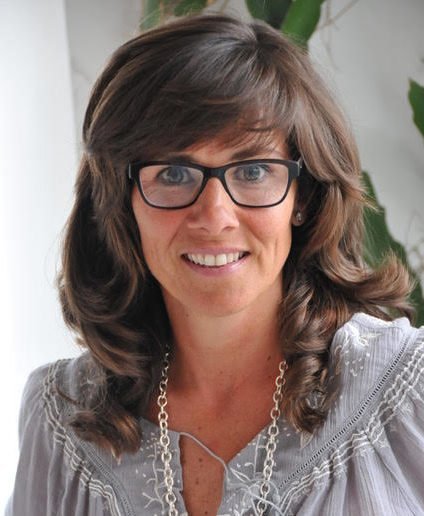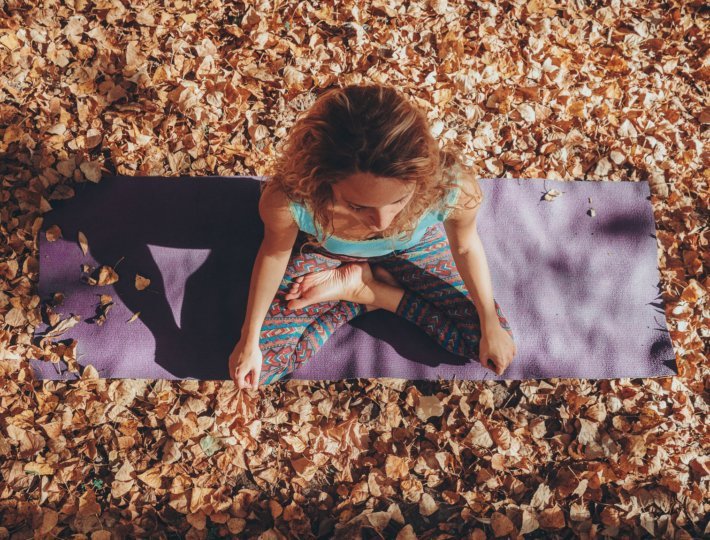At the start of the year, many of us are looking for clear, irrefutable wisdom that we can call upon at any given moment and know it will make a difference to us. Hundreds of self-help books get published annually, providing us with exercises, techniques and insights to assist us as we set new goals and intentions for the upcoming year. We hope that by reading these books, we will be transformed into the beings that we have always longed to be, for example, more patient, more loving, a better listener, more productive, happier, more brave, more understanding, etc. Many of us are addicted to becoming better versions of ourselves.
Ultimately, what we are truly seeking is to experience greater peace. Deep within, we are hoping that the desire to change ourselves will eventually fall away. Imagine if we shared with someone on January 1, “My New Year’s resolution is to just be me and not focus on improving myself at all.” I believe some of us would be shocked and a bit judgmental. We might even accuse that person of being selfish or ignorant. Yet, the best wisdom and insight I’ve found to date (that actually works) is practicing just this: Accepting oneself.
Now, this task may seem lofty to some, and to those I say “give this a chance.” To others who might think this is too easy, I would share that the path of unconditional acceptance may not be a journey that you’ve taken all the way to the end.
I used to think that if I could just get some space from the people and situations around me that made me feel crazy, destabilized or unworthy, I would find peace. About 15 years ago, I tried to quiet my mind via yoga for several years. What I realized was that the other people in the room and their issues seemed to be affecting and disrupting my efforts to find peace. I didn’t realize at the time that what was actually getting stirred up was my own internal battle within myself and not from those around me.
Related: Can Others’ Bad Vibes Affect Your Practice?
So I decided to directly investigate the battle that my mind was waging against myself via Buddhist meditation. I figured I could be alone and read and practice these meditations and insights without anyone annoying me!
What I came to understand over the years was that I was the cause of my own turmoil and the route to peace was an inside job. I discovered that there are great insights and practices from the Buddhist tradition, but also from neuroscience, positive psychology, and yoga that could get one into what I call “peace shape.”
Peace shape is what I believe we all want to attain. I named it this because the task is similar to getting any other part of ourselves in shape. It requires consistent, diligent, sustained effort over a given period of time. Peace is available to each and everyone one of us. It is not exclusive to monks.
Peace shape can come in many different shapes and sizes and wear many different hats. Below, are key insights and techniques from 10 different book authors (in no particular order) who I believe have their finger on the pulse of peace, or at least a piece of it. For book six, I offer an adapted guided meditation that you can do with me right now (click the video above).
1. Love 2.0: Finding Happiness and Health in Moments of Connection by Barbara Fredrickson
Take-home message: Love is an inside job that can be shared at any given moment. I chose this book because it helped me not only redefine love, but also expand my definition of it. Scientific research shows that love is far more than a positive emotion one experiences with just those close to them. Instead, it is a group of emotions that we experience moment-to-moment when activated. It also draws us out of our cocoons of isolation to attune with others creating micro moments of love. These consistent doses can help us to grow, change, and become healthier and more resilient over time. The great news is that we can experience these “micro moments of love with other individuals, even strangers, as well as within ourselves if we pay attention and actively cultivate these feelings. Most importantly, we need to feel love within ourselves, so that we feel that emotion as we connect with others.
Try this mindfulness exercise: Every morning, before I get out of bed, and every evening before I go to sleep, I spend five to 10 minutes sending love, first to myself—loving the me that I am right now—then to my children, other family members, and people who I know are struggling at the moment. Over time, this ritual has healed many ruptured feelings that I had toward others as well as strengthened that embodied feeling of love that rests within me at all times, but sometimes can feel obscured. In the book, this exercise is called loving kindness meditation.
Related: 10-Minute Loving-Kindness Meditation
2. Nonviolent Communication: A Language of Life by Marshall Rosenberg
Take-home message: We are never angry because of what people say or do. I realized, while reading this book, that a great deal of my unhappiness and stress arose from conflicts with others. I was often making unconscious demands of others in the guise of a request and others were doing the same to me. This common approach of communication can cause ruptures in relationships. Marshall Rosenberg not only explains that the underlying cause of all conflicts is that one of our basic human needs is not being met. He also teaches us how we can repair the ruptured moment using the NVC tools. First, observe rather than judge the chain of events that cause the unwelcome feelings. Next, name your feelings and share which of our basic needs is not being met. Finally, instead of demanding others meet our expectations, request their support. We no longer unconsciously expect others to make us happy. We can also recognize that others struggle with their needs not being met as well and see them more compassionately. This empathy enables us to have greater capacity to support others.
Try this mindfulness exercise: Reflect back on a recent conflict you had with another person and see what need(s) were not being met. Some examples of basic human needs that we all share: Autonomy, integrity, celebration, interdependence, play, spiritual communion, and physical nurturance. Now, can you think of a simple request of an another that would meet your need. Repeat this exercise with other incidents so that you get more practiced at identifying needs and finding solutions.
3. A Mind at Home with Itself: How Asking Four Questions Can Free Your Mind, Open Your Heart, and Turn Your World Around by Byron Katie
Take-home message: What I believe to be true might not be. In fact, the opposite might be true. It is our rigid attachment to beliefs that causes us great stress, anxiety, and depression. I think that one of the greatest lessons that I have learned is to not believe my thoughts. This may sound radical and crazy to you, but one thing that I have become certain of is that my thoughts are just that—only thoughts. They cannot, and do not, live outside of my head. It is this unconscious attachment to every thought both “good’ and “bad” that has caused me much of my suffering. Byron Katie’s approach of questioning our thoughts and asking ourselves if they are true and could the opposite be true, too, awakens our awareness to our blind commitment to these beliefs. Simply by asking ourselves the question, Is it true?, we begin to free ourselves from unconscious negative beliefs about ourselves and others.
Try this mindfulness exercise: Find a quiet place where you can sit comfortably and will not be disturbed. Consider a recent conflict with another person—partner, coworker, or friend—and identify what you believe they did that was wrong. Then ask yourself if it is true what you believe. Next, ask yourself if you are 100 percent certain that it is true? At this point, notice what your body feels like as you feel the attachment to this belief. Ask yourself if the opposite could be true as well. Again, notice what your body feels as you attempt to experience this other perspective. Finally, ask yourself what would it feel like if you didn’t have this thought. The mere questioning loosens the physical attachment to the belief.
4. The Freedom of Being: At Ease with What Is by Jan Frazier
Take-home message: What is happening on the inside of our system is not the same as what is happening on the outside. Jan Frazier is a gifted writer enabling the reader to directly experience the way in which the mind personalizes or conceptualizes what is happening moment-to-moment and distracts us from directly experiencing the present. What is happening simultaneously is that while we are living our lives, our mind is narrating the events and qualifying them as pleasurable or not. In return, our body receives messages communicating the mind’s perception of the situation. Our reaction to the situation is based on these messages. However, the event that is taking place at any given moment is free from these beliefs. They are just events with no quality to them. We assign them quality and when we do this, we suffer. We are resisting the unpleasant sensations being activated in our system. What would happen if we got in touch with these bodily feelings and allowed them their due course? The felt sensations would arise, be experienced, and then dissolved in a matter of minutes. It is our resistance to these feelings that is most painful.
Try this mindfulness exercise: Find a quiet space where you can observe nature. Take 15 minutes and simply watch the natural landscape in front of you. Try to observe all the details of your surroundings without naming them or qualifying them, i.e., old, bare, green, trees, etc. Let your eyes wander as they observe. Notice if your mind wants to analyze or judge the scene and, instead, come back to observing it. When we allow ourselves this gift of simply witnessing, we create a sense of spaciousness within our mind and a loosening of the gripping thoughts.
5. In Touch: How to Tune In to the Inner Guidance of Your Body and Trust Yourself by John Prendergast
Take-home message: The heart holds our deepest knowing. Uncovering and living by this truth allows our unique journey to unfold beautifully. John Prendergast is a magnificent teacher and guide of directing one to their own deep knowing of what is most valuable to each of us in any given moment. We discover that when we shift our primary attention from the mind to the heart, we begin to experience what feels right to us as well as what doesn’t. The ability to listen to the body as it guides us toward our deepest sense of happiness and contentment is like following an inner compass that knows which direction we must follow.
Try this mindfulness exercise: Close your eyes and take a few, deep, slow breaths. Feel your feet on the ground and the weight of your body in the chair letting yourself be held by the chair, and gravity and the earth. Be aware of the sensations of your body. Notice the sounds around you (try to listen without labeling them). Then notice the sensations of touch within your hands, feet, back bottom, and legs. Feel the space inside your body and then around your body. Notice your emotions, whatever they are—joyful, peaceful, anxiety, sadness, etc. Let them be as they are. Next, notice your thoughts as you would observe clouds passing in the sky. Notice if they are in the form of words, images or memories, and if they are from the past or future. Let each sensation be as it is. Finally, notice the one thing that has been consistent throughout the exercise: It is the noticing itself. Rest as this silent awareness for as long as you’d like.
6. The Way of Liberation: A Practical Guide to Spiritual Enlightenment by Adyashanti
Take-home message: Adyashanti is one of the clearest, most direct teachers for knowing truth and experiencing peace. The journey to freedom from our suffering is all about letting go, not adding on. We must let go of our expectations, judgements, beliefs, and identities that we are blindly attached to if we truly want to experience consistent peace, especially during difficult times. Most of us don’t even know that we are holding onto these things. We just think that is who we are. Consider this: In reality, we are directly experiencing each moment. Any belief that we place on it is like a subtitle added on to a silent movie. What we directly experience in a given moment (without our stories of what should or shouldn’t be happening) is reality. It is our ego’s need to qualify and analyze what is reality that causes suffering. Believing a single thought that opposes the way things are, or have been, is the true cause of emotional pain.
Try this mindfulness exercise: Try this guided meditation, inspired by Adyashanti, to help you practice becoming conscious of awareness. This foundational meditation is a practice of observing and accepting everything that arises within our mind and body without resistance. Scroll up to the top and click on the main image to begin this 15-minute meditation.
7. The Blind Spot Effect: How to Stop Missing What’s Right in Front of You by Kelly Boys
Take-home message: Discovering where we are blind helps us to see. Blindspots manifest when we are unable to see truth because of past conditioning. Stored within our subconscious are hidden beliefs about ourselves ,like being unloveable or unworthy. They cause us to operate on automatic pilot, acting in ways to avoid these feelings. Unfortunately, the outcomes of these unconscious behaviors usually validate the negative belief. It is difficult to have visibility into that which we are unconsciously avoiding. By becoming aware of these thought patterns, beliefs, and emotions that arise within ourselves, we can begin to see our blindspots. It is through a gentle welcoming practice of allowing ourselves to acknowledge the false stories about ourselves that we become more whole, integrating the wounded past with our truth of the present. This work requires great self-compassion, knowing that we are doing the best that we can.
Try this mindfulness exercise: Stand in front of a mirror (real or metaphoric) as a means to reflect upon yourself. Ask yourself, “Who am I supposed to be?” See what words and images arise as you ask yourself this question. Notice the identities that surface, such as loyal daughter, good brother, patient friend, slender, wealthy, hardworking, attractive, athletic, generous, good listener, etc. Now, ask yourself, “Who would I be if I were none of these identities?” Again, pay attention to what words or images come up as you see yourself naked of the roles, identities, and expectations that you have placed upon yourself. What is left is the genuine you, the unmasked self. Look at this “self” with compassion. Seeing yourself free of roles or judgment fosters loving acceptance of ourselves just as we are.
8. Hardwiring Happiness: The New Brain Science of Contentment, Calm, and Confidence by Rick Hanson
Take-home message: Although you can’t change an experience, you can change how you feel about it. Rick Hanson, a leading neuroscientist, not only explains why the brain is more susceptible to negative thoughts and beliefs, but also shares how this wiring can be changed over time. We can shift our negative bias of thoughts to be more positive, healthy, and resilient. There is a famous saying that the mind takes the shape of what it rests upon. In other words, where we put our attention and what we focus on defines the wellbeing of our brain (experience, moment). Our brains are like gardens, we can either put up with the weeds and the flowers, or we can consciously pull up the weeds and grow more flowers.
Try this mindfulness exercise: Let’s break down H.E.A.L. 1. Have a positive experience. Find something good in your immediate situation, like a cozy chair, a beautiful tree outside, a warm cup of tea, or think of something or someone you are glad about in your life now or from the past. Or think of something that make you feel grateful, happy, loved or loving. 2. Enrich it. Let this thought fill your mind and enjoy it. Gently encourage the experience to become more intense. Take note of any sensations within your body that arise. 3. Absorb it. Intentionally sense it immerse into you as you immerse into it. 4. Link positive and negative material. While having this positive experience in your foreground and having your attention on the positive feelings within you, bring up in the background a past experience that has been bothering you. Alternate your focus from the positive sensations in the foreground to those negative ones in the background. (If the negative feelings hijack the positive, drop part 4 and stick with steps 1 to 3.)
Related: Ayurveda’s Best Advice on Brain Health
9. The Gifts of Imperfection: Let Go of Who You Think You’re Supposed to Be and Embrace Who You Are by Brene Brown
Take-home message: Although we are used to protecting ourselves from being vulnerable, leaning into this discomfort is the key to love, joy, and peace. When we allow ourselves to face our weaknesses, we are actually demonstrating incredible bravery. There is a great deal of shame and sense of unworthiness that inhibits many of us from revealing our more sensitive, intimate self. However, if we can tap into the energy that fuels courage and the willingness to face our fears, we begin to chip away at the root causes of it: shame and unworthiness. We will need to be wise with whom we connect with when asking for compassion in a given moment. However, it is in the sharing with a confidant our experiences of shame and unworthiness that they begin to dissolve and loosen their grip on our well being.
Try this mindfulness exercise: Take 15 minutes and find a place where you can be quiet and not be disturbed. First, get quiet, then bring to mind a time in you past where you felt shame. Notice what this direct sensation feels like in your body as you observe the memory. These are future clues for you to be able to notice the next time you experience shame. Next, think of a courageous act that you could do for yourself that helps you feel less hurt. Plan a time you can do this activity. Finally, think of a person who you feel safe to share this vulnerable moment. A person who has the capacity to listen and empathize with your experience. Find a time to reach out to this person and share your shame experience.
10. Whatever Arises, Love That: A Love Revolution That Begins with You by Matt Kahn
Take-home message: What we are waiting for others to do or tell us, we need to do for ourselves. I love the message of this book because it reminds me to not wait for others to give to me what I need to give to myself. We spend a great deal of time hoping that others will validate our worthiness and satisfy our deepest desires. Instead, Matt Kahn asks us to love ourselves, all of ourselves! It might seem easy to love the me that is kind, generous, and understanding. Meanwhile, it’s more difficult to love those parts of ourselves that are jealous, arrogant, sad, guilty, angry, or unworthy. If we are willing to love ourselves when these emotions arise from within, we begin to heal the old wounds that have been suppressed until now. As we truly love all of the emotions that we experience within ourselves, we start experiencing a greater and greater sense of peace and acceptance.
Try this mindfulness exercise: Creating your own personal love statement helps us hear the words that we wanted to hear when we were younger, but did not hear or did not hear enough. Ask yourself, “Who, in my present or past experience, hurt me the most? And what were the words they didn’t say that would have allowed me to heal.” Whatever words come to you are just what you need to hear. The love statement can change from day-to-day or week-to-week. The important part of the exercise is to repeat this phrase as many times a day as you can and with deep intention.










Comments (0)